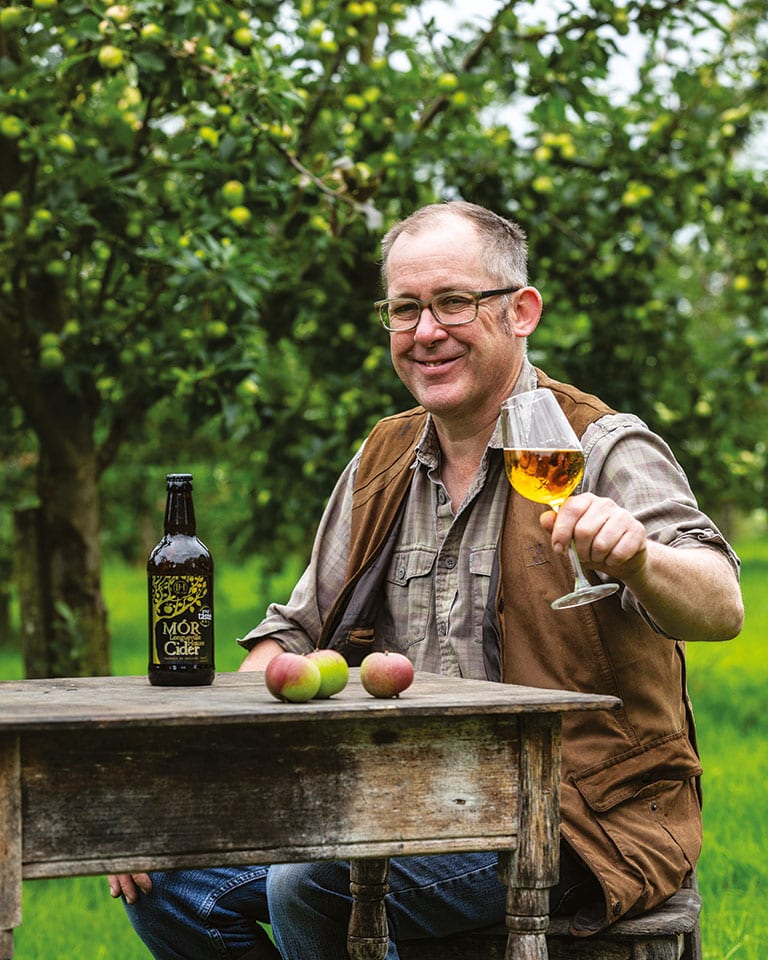Meet the producers: Mór cider
Mór cider, aged in brandy barrels, is as refined as the Longueville estate in County Cork where it’s made. Crafted using juice from the estate’s orchards, it’s won a top international award. Patrick McGuigan talks to William O’Callaghan, a second-generation cider maker who follows the family tradition by keeping things simple

Discover the award-winning Mór cider
There are plenty of good reasons to visit Longueville House in County Cork, Ireland. The 300-year-old country house has a four-star hotel and an
award-winning restaurant. It also offers activities like fly fishing, falconry and horse riding on the surrounding 450- acre estate in the beautiful Blackwater Valley. only cider apples that we have grown ourselves and using only 100% juice. No concentrates, no water, no added preservatives, no added sugars and no added sulphates.
But for drinkers it’s the tours of the 25-acre apple orchard and distillery that are the biggest draws. First planted by Longueville’s owner Michael O’Callaghan in 1985, the orchard is home to Dabinett and Michelin cider apple trees, whose tart and tannic fruits are used to make cider and Irish Apple Brandy – Cork’s answer to Calvados, made by distilling cider.
We have a strong blossom-to-bottle ethos here.
What makes this cider so delicious?
“My father always instilled in his children the fact that we are only curators of the land for the next generation,” says Michael’s son William O’Callaghan, who now runs the business with his wife Aisling, after his father passed away in 2010. “We have a very strong blossom- to-bottle ethos here only cider apples that we have grown ourselves and using only 100% juice. No concentrates, no water, no added preservatives, no added sugars and no added sulphates.
“It’s a totally natural cider. We take great pride in being as sustainable as possible with a huge respect for the terroir and environment. We do not use any pesticides or chemicals in the orchards or on the apples.”
O’Callaghan makes his smooth, rich brandy and two types of cider with master distiller and chief cider-maker Dan Duggan. The original Longueville House Cider is crisp, clean and medium dry, but it’s the richer, punchier Mór that won plaudits at this year’s awards. Developed eight years ago, it’s a unique product that is made by allowing freshly pressed apple juice to naturally ferment and age in barrels previously filled with apple brandy. Mór is the Irish word for ‘big’ – a nod to the cider’s 8% ABV and its bigger, rounder flavour, which comes from barrel ageing.
“It’s got a buttery fruitiness – apricot and butterscotch notes – but also structure from the tannins,” says O’Callaghan, who formerly trained as a chef, including a stint with Raymond Blanc. “Cider is an extension of cooking and taste. It’s just like the kitchen – if you work with good ingredients you can make a good product.”
How to enjoy it?
The rich, tannic notes of Mór cry out for cheese. O’Callaghan is a fan of cheddar from nearby cheesemaker Dan Hegarty. The producer also makes a Comte-like raw milk cheese called Templegall, which works well. You can also drink it alongside this Normandy-style pork casserole or with rosemary and caramelised apple Welsh rarebit.
Subscribe to our magazine
Food stories, skills and tested recipes, straight to your door... Enjoy 5 issues for just £5 with our special introductory offer.
Subscribe
Unleash your inner chef
Looking for inspiration? Receive the latest recipes with our newsletter